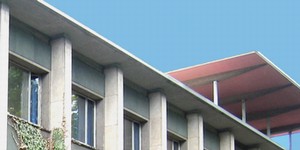Final Theses
At our institute, we constantly offer topics for final theses. The topic suggestions you can find on this page are usually strongly related to our assistants' current research, and thus allow you to work on state-of-the-art technologies. Don't hesitate to contact the responsible assistants regarding the topics suggestions or their research in general.
If you have question regarding the organization of final theses, you can contact Dominik Mehlem.
Here is a list of the currently offered topics:
Bio Signal Processing and Communication
| Compression of Genomic Sequences | Jens-Rainer Ohm, Christian Rohlfing |
|---|---|

Next Generation Sequencing (NGS) technologies enable the usage of genomic information as everyday practice in several fields, but the growing volume of data generated becomes a serious obstacle for a wide diffusion. Therefore, efficient compression of genomic data is a critical element whose lack is currently limiting its application potential. Several master theses are offered or subsequently planned in this area; candidate students should have solid knowledge and skills in mathematics for signal analysis and processing, with emphasis on coding/compression, as well as similarity analysis of discrete sample-patterns/letter-strings (Note: This could also be transferred from the background of areas such as audio or video signal processing/compression). The following concepts are planned to be investigated in detail:
Comparison of developed genomic compression methods is planned to be performed against the benchmark of the emerging MPEG-G standard (ISO/IEC 23092-2). | |
| Suitable for Master theses. | |
Point Cloud Compression
The general idea of point cloud compression is to find a representation of a point cloud which is less data exhaustive than the original raw point cloud. Currently, in MPEG (Moving Picture Experts Group) there are two different point cloud compression standards being developed, which will most likely be the new state-of-the-art for the next years. One standard is called video-based point cloud compression (V-PCC) and focuses on the compression of dynamic point cloud sequences (i.e. point cloud “video”). Here, the point cloud is projected onto a 2D canvas and the so created video streams are then compressed by a conventional video coder. The other standard is called geometry-based point cloud compression (G-PCC) and currently focuses on compression of static point clouds. Here, the point cloud is compressed with the help of conventional 3D tools, i.e. the use of an octree to iteratively split the point cloud into 8 subblocks.
|
Machine/Deep learning-based Approaches for Point Cloud Compression |
Dominik Mehlem, M.Sc. |
|---|---|

In recent years, first approaches for autoencoder-based approaches showed to outperform the traditional approaches from a RD-based perspective. Still these approaches show promising opportunities for further research. Possible topics could include, but are not limited to:
Over time there might be different and more diverse topics be available in this area. When interested please feel free to reach out to me, so that we can further discuss details. | |
| Suitable for Bachelor and Master theses. | |

